Hummingbird Technologies will oversee 400,000 hectares of Salic Farmland
By Grace Yuan
“We use sophisticated analytics, deep learning models, image classification and neural networks to unlock some of the most complex bioinformatic problems known to 21st-century agronomy,” said Will Wells, CEO at Hummingbird Technologies, in a recent interview with AgroPages. He also shared his views on the innovation and the application value of Hummingbird’s products , its target markets and target clients, the plans to extend new markets/regions, as well as current collaborations with other companies.
Q1. Could you briefly introduce Hummingbird and its team background?
Hummingbird Technologies is an artificial intelligence business, powered by machine learning and computer vision techniques. We use imagery and data analytics from UAV, plane and satellite technology, combined with soil, weather and historic management data to provide farmers with actionable intelligence of their crops at a canopy level, and at critical decision-making junctions in the season.
The actionable data we gather is processed and provided back to the customer within 24 hours, via a cloud-based platform, with maps directly exportable into farm machinery and equipment. We offer a range of different products and services in Cereals, Potato, Soybean, Corn, Sugar Beet and Canola, these include crop stress detection, disease detection, weed mapping, nutrient management as well as yield prediction and plant counting in row crops.
We are based in London and currently operate in the UK, Brazil, Russia, Ukraine, Australia and New Zealand. Our team is made up of agronomists, data scientists, engineers, sales and business development roles totalling 40 employees.
By pushing the boundaries of science and technology, our mission is to improve the efficiency of global crop production and to feed the world’s growing population sustainably. The solutions and products empower our growers to reduce inputs, optimise yields and minimise ecological harm.
Q2. Could you describe how Hummingbird’s products are innovative and the application value in terms of return on Investment?
We use sophisticated analytics, deep learning models, image classification and neural networks to unlock some of the most complex bioinformatic problems known to 21st-century agronomy. The quality and size of our data sets have grown, as we solve the same problems, across the same crops and the globe (Brazil, Ukraine, Russia, UK, Aus/NZ and soon North America).
We do not claim to solve all of agriculture, but we have the most complete and advanced solutions in Cereals, Canola and Potato, whilst we are not far off with Soybean, Sugarcane, Corn and Pulses. Our models for weed classification, biomass/height estimation, plant counting and disease detection are getting exponentially more accurate. Dedicated focus such as this is incredibly important to solving problems like pre-symptomatic disease detection or weed classification in Cereals and Canola, where we now have a competitive advantage. We are crop specific, which allows us to go deeper and gives us greater focus, thus illustrating an ROI scenario for users.
Machine learning algorithms enable us to analyze a vast amount of imagery at superior speed, accuracy and scale than other Agtech businesses that pull unadjusted Sentinel or Landsat imagery. This is difficult to replicate and we have the advantage of three years over others.
One of our products which deliver a huge amount of value and ROI to our customers is the Green Area Index (GAI), a product used to target N & PGR inputs on Canola. By applying nitrogen and PGR’s based on precise canopy requirements, we have seen a successful reduction in input costs of up to £49/ha.” 、
Hummingbird’s Variable Rate Application map based on Green Area Index for Canola
Q3. What are your target markets and target clients? What are the plans to extend new markets/regions?
Our products are developed alongside farmers and agronomists to solve problems that add value to everyone involved in the production process. Our addressable market has increased to include Agronomy firms, AgChem, AgDist, Government and Big Food as our value proposition becomes increasingly wide.
We currently operate In the UK, Russia, Ukraine, Brazil, Australia and New Zealand. Our total addressable market is greater than 300 million hectares, including large agricultural economies such as the USA and Canada. Revenue growth was four times in 2018 and we aim to achieve at least five times in 2019, expanding and leveraging our existing client base in regions we already have a strong foothold.
Q4. Could you talk about your company’s current collaborations with other companies?
We collaborate with some of the most established and prestigious agribusinesses globally and this is what gives Hummingbird such credibility in the market. To give an example, we are working with one of the largest food companies in the world to help manage their potato supply chain, creating greater visibility and increasing their sustainability from the start of production to processing. We do this by using our existing solutions which we have developed to accurately count plant populations and predict yields in potatoes. This saves our client in both economic and environmental measures.
In addition, we collaborate with one of the largest agrochemical companies in the world to help drive sales, lower barriers to entry and ensure product stewardship by allowing their clients to target inputs, justifying the use of more expensive chemicals by helping to increase yields and demonstrate best practice.
